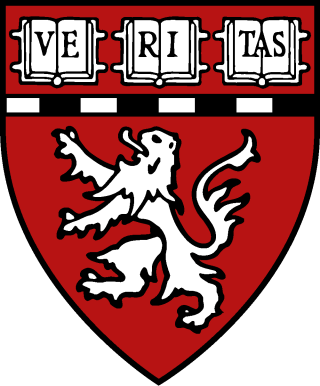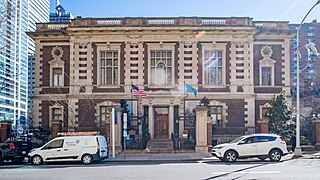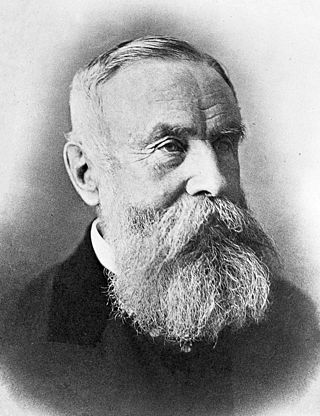
Pathology is the study of disease and injury. The word pathology also refers to the study of disease in general, incorporating a wide range of biology research fields and medical practices. However, when used in the context of modern medical treatment, the term is often used in a narrower fashion to refer to processes and tests that fall within the contemporary medical field of "general pathology", an area that includes a number of distinct but inter-related medical specialties that diagnose disease, mostly through analysis of tissue and human cell samples. Idiomatically, "a pathology" may also refer to the predicted or actual progression of particular diseases, and the affix pathy is sometimes used to indicate a state of disease in cases of both physical ailment and psychological conditions. A physician practicing pathology is called a pathologist.

Harvard Medical School (HMS) is the medical school of Harvard University and is located in the Longwood Medical Area in Boston, Massachusetts. Founded in 1782, HMS is one of the oldest medical schools in the United States. Harvard Medical School (HMS) provides patient care, medical education, and research training through its 15 clinical affiliates and research institutes such as Massachusetts General Hospital (MGH), Dana–Farber Cancer Institute, Brigham and Women's Hospital, Beth Israel Deaconess Medical Center, Boston Children's Hospital, Mount Auburn Hospital, McLean Hospital, Cambridge Health Alliance, The Baker Center for Children and Families, and Spaulding Rehabilitation Hospital. Harvard Medical School also partners with newer entities such as Harvard Catalyst, Broad Institute of MIT and Harvard, Harvard Stem Cell Institute, the Center for Primary Care, and Wyss Institute for Biologically Inspired Engineering.

Phineas P. Gage (1823–1860) was an American railroad construction foreman remembered for his improbable[B1] survival of an accident in which a large iron rod was driven completely through his head, destroying much of his brain's left frontal lobe, and for that injury's reported effects on his personality and behavior over the remaining 12 years of his life—effects sufficiently profound that friends saw him as "no longer Gage".

The Royal College of Surgeons of England is an independent professional body and registered charity that promotes and advances standards of surgical care for patients, and regulates surgery and dentistry in England and Wales. The college is located at Lincoln's Inn Fields in London. It publishes multiple medical journals including the Annals of the Royal College of Surgeons of England, the Faculty Dental Journal, and the Bulletin of the Royal College of Surgeons of England.
The New England Journal of Medicine (NEJM) is a weekly medical journal published by the Massachusetts Medical Society. Founded in 1812, the journal is among the most prestigious peer-reviewed medical journals. Its 2023 impact factor was 96.2, ranking it 2nd out of 168 journals in the category "Medicine, General & Internal".

Oliver Wendell Holmes Sr. was an American physician, poet, and polymath based in Boston. Grouped among the fireside poets, he was acclaimed by his peers as one of the best writers of the day. His most famous prose works are the "Breakfast-Table" series, which began with The Autocrat of the Breakfast-Table (1858). He was also an important medical reformer. In addition to his work as an author and poet, Holmes also served as a physician, professor, lecturer, inventor, and, although he never practiced it, he received formal training in law.

William Thomas Green Morton was an American dentist and physician who first publicly demonstrated the use of inhaled ether as a surgical anesthetic in 1846. The promotion of his questionable claim to have been the discoverer of anesthesia became an obsession for the rest of his life.

The Warren Anatomical Museum, housed within Harvard Medical School's Countway Library of Medicine, was founded in 1847 by Harvard professor John Collins Warren, whose personal collection of 160 unusual and instructive anatomical and pathological specimens now forms the nucleus of the museum's 15,000-item collection. The Warren also has objects significant to medical history, such as the inhaler used during the first public demonstration of ether-assisted surgery in 1846, and the skull of Phineas Gage, who survived a large iron bar being driven through his brain. The museum's first curator was J.B.S. Jackson.

The Mütter Museum is a medical history and science museum located in the Center City area of Philadelphia, Pennsylvania. It contains a collection of anatomical and pathological specimens, wax models, and antique medical equipment. The museum is part of The College of Physicians of Philadelphia. The original purpose of the museum, founded with a gift from Dr. Thomas Dent Mütter on December 11, 1858, was for the education of medical professionals, medical students, and invited guests of College Fellows, and did not become open to non-Fellows until the mid-1970s. The College of Physicians of Philadelphia is itself not a teaching organization, but rather a member organization or "scientific body dedicated to the advancement of science and medicine".

John Collins Warren was an American surgeon. He was a founder of the New England Journal of Medicine and was the third president of the American Medical Association. He was the first Dean of Harvard Medical School and a founding member of the Massachusetts General Hospital. In 1846 he gave permission to William T.G. Morton to provide ether anesthesia while Warren performed a minor surgical procedure. News of this first public demonstration of surgical anesthesia quickly circulated around the world.

Henry Jacob Bigelow was an American surgeon and Professor of Surgery at Harvard University. A dominating figure in Boston medicine for many decades, he is remembered for the Bigelow maneuver for hip dislocation, a technique for treatment of kidney stones, and other innovations. He was instrumental in bringing the anesthetic possibilities of ether to the attention of medical men, and rescuing the case of Phineas Gage from relative obscurity. He was a vocal opponent of vivisection, and played a minor role in the apprehension of the culprit in the Parkman–Webster murder case.

Jacob Bigelow was an American physician, botanist and botanical illustrator. He was architect of Mount Auburn Cemetery in Cambridge, Massachusetts, husband to Mary Scollay, and the father of physician Henry Jacob Bigelow. The standard author abbreviation Bigelow is used to indicate this person as the author when citing a botanical name.

The Boston Medical Library of Boston, Massachusetts, was originally organized to alleviate the problem that had emerged due to the scattered distribution of medical texts throughout the city. It has evolved into the "largest academic medical library in the world".

James Jackson was an American physician. He was a proponent of Massachusetts General Hospital and became its first physician.

The Boston Phrenological Society was formed in 1832 upon the death of a prominent continental phrenologist, Johann Gaspar Spurzheim. Spurzheim was an anatomist and a former pupil of Franz Josef Gall. Spurzheim's brief tour and death popularized phrenology in the United States outside of its controversial place in medical lecture halls, and into the sphere of social reformers and ministers. The Society's formation launched the phrenology movement in the United States. The Boston Phrenological Society was founded by phrenology adherent Nahum Capen on the day of Spurzheim's funeral, November 17, 1832.

John Barnard Swett Jackson was an American surgeon and pathologist. He was the first curator of the Warren Anatomical Museum and was dean of Harvard Medical School from 1853 to 1855. In 1854, the Shattuck Professorship of Morbid Anatomy at Harvard Medical School was created for him. He held the post from then until his death in 1879, when the position was renamed the Shattuck Professorship of Pathological Anatomy. He was a member of the Boston Society for Medical Improvement.

William Fiske Whitney was an American anatomist, curator, and pathologist. Whitney was a pioneer in the field of the medical museum and originator of the method of quick diagnosis. An obituary describes him as "another of those early pioneers in pathology and the use of the microscope on this continent of whom his contemporaries, the late Sir William Osler and Prof. William H. Welch are notable examples." He specialized in anatomy, becoming one of the top experts in the country. Later, he was much sought after by the courts for his exceptional anatomical knowledge, especially in determining if poison had any bearing on a case.
The Contagiousness of Puerperal Fever is an essay written by Oliver Wendell Holmes which first appeared in The New England Quarterly Journal of Medicine in 1843. It was later reprinted in the "Medical Essays" in 1855. It is included as Volume 38, Part 5 of the Harvard Classics series.

Jonathan Mason Warren was an American surgeon. He specialized in plastic and reconstructive surgery. He is known to be the first person to perform Rhinoplasty in the United States.

John Ware was an American physician, college professor, and editor. He was a professor at Harvard University from 1832 to 1858. He was a founding member of the Boston Society of Natural History and fellow of the American Academy of Arts and Sciences.




















